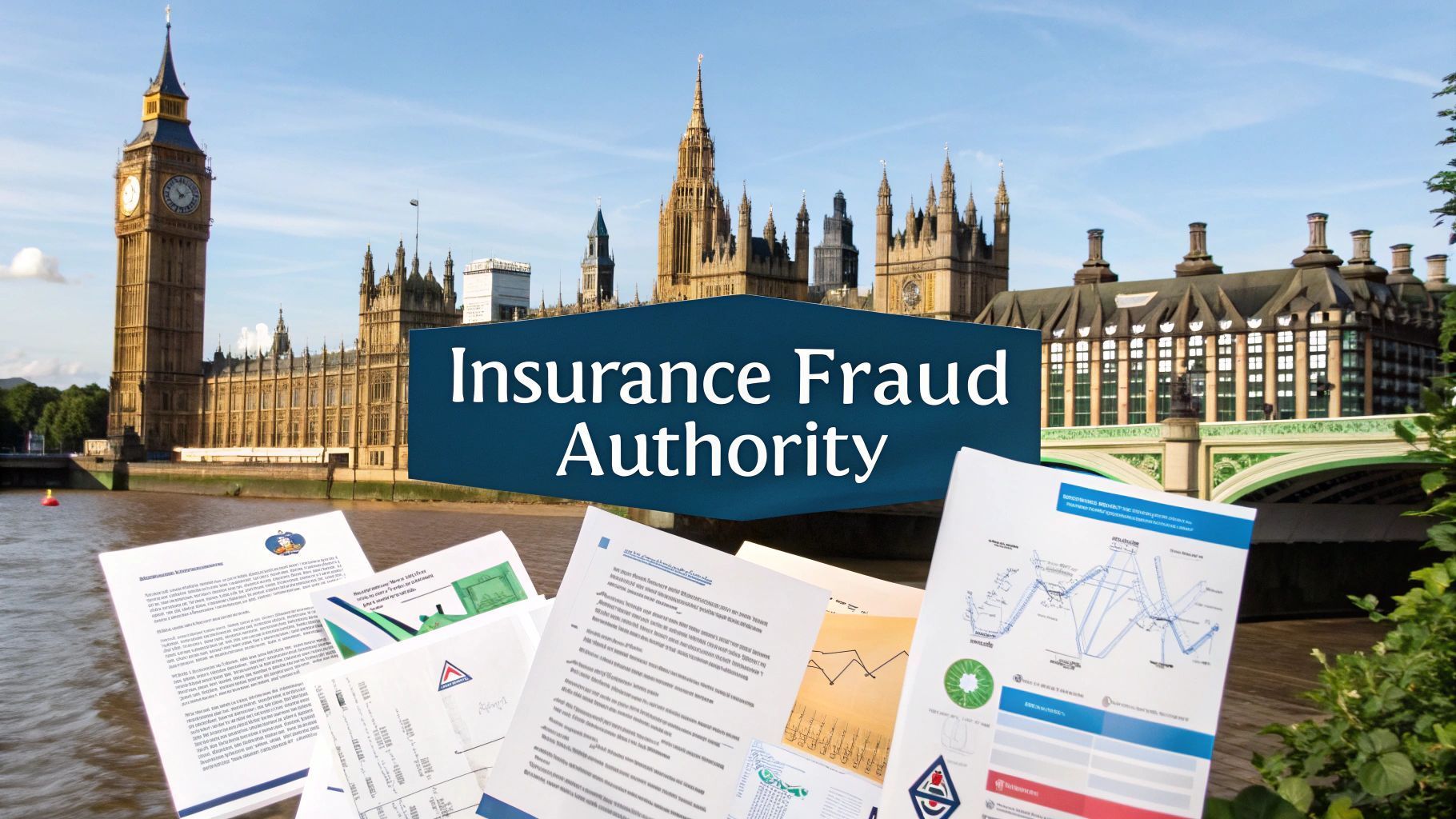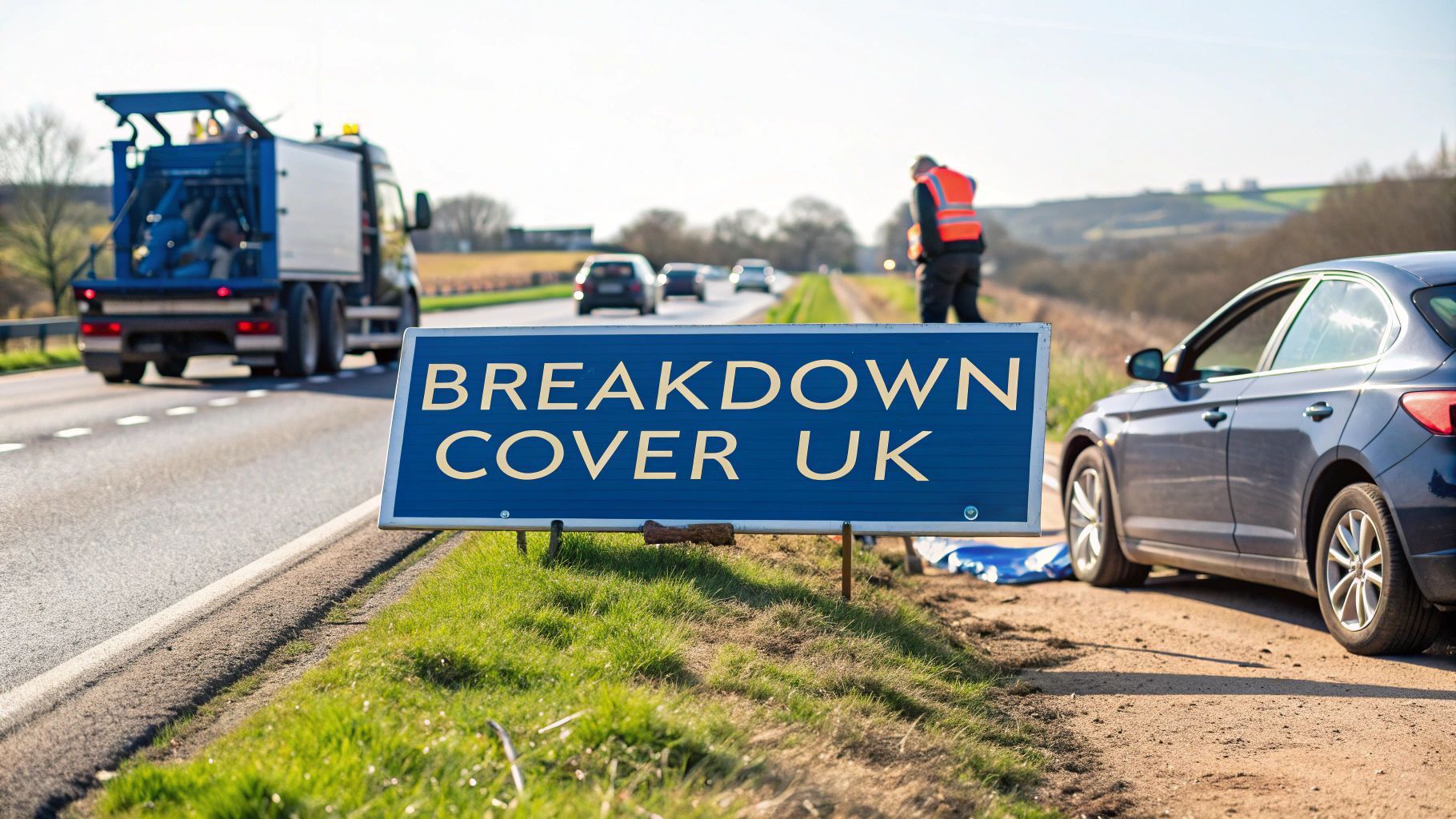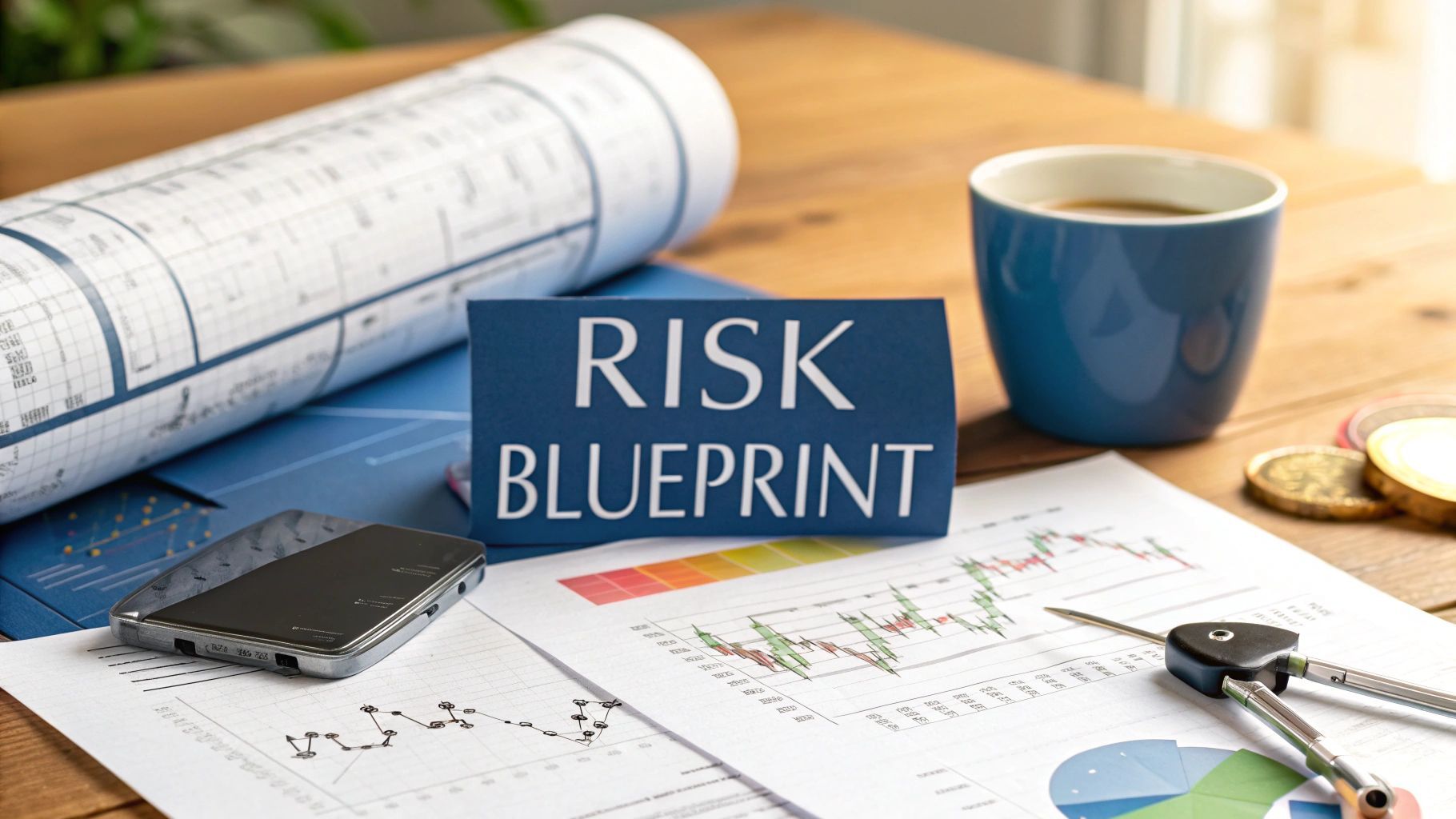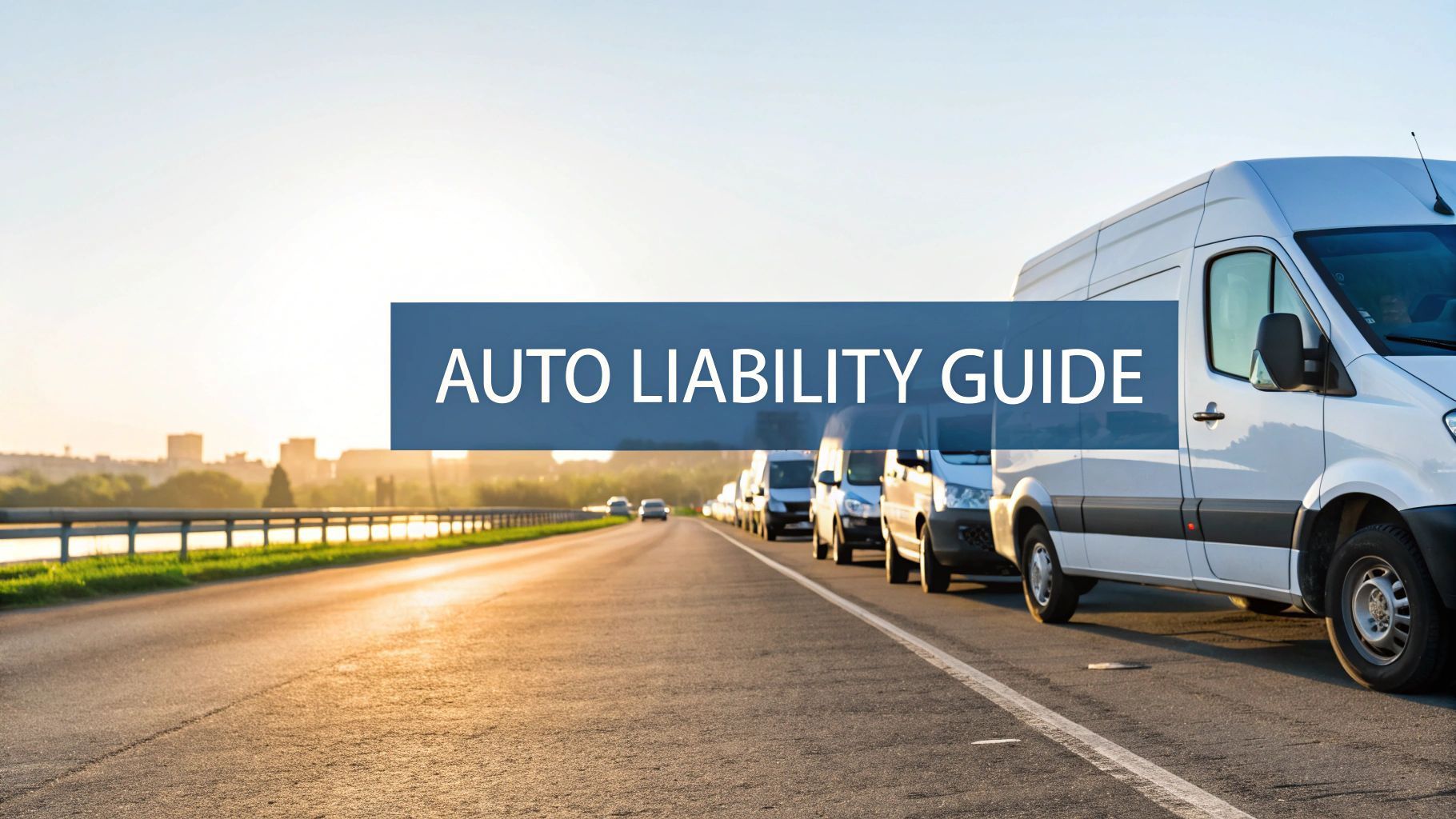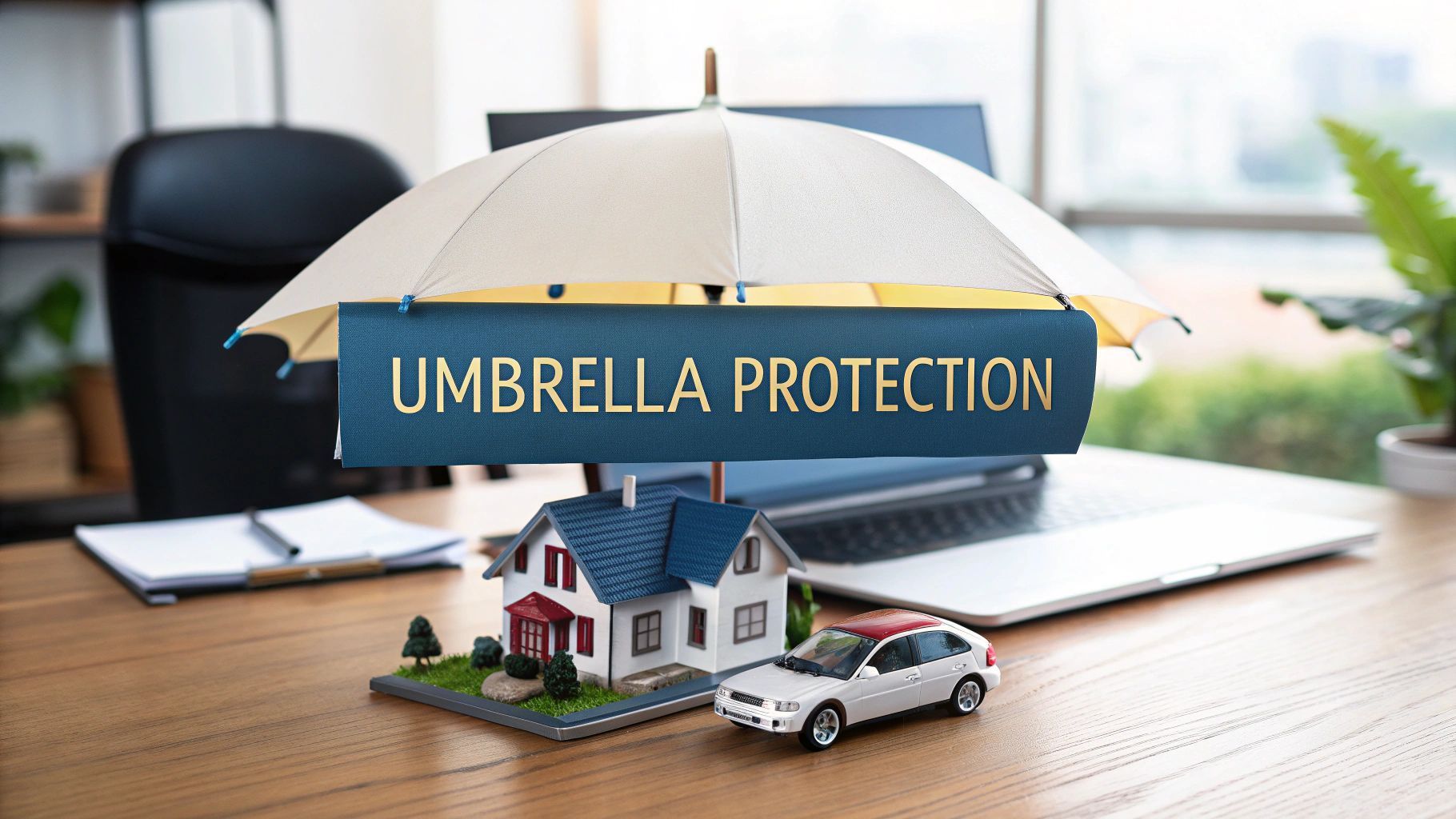A Guide to Student Home Contents Insurance
Think about your university room for a moment. It is packed with everything you need to study and relax: your laptop, your smartphone and maybe even a TV or a gaming console for unwinding. Now imagine having to replace all of it at once. That is where student home contents insurance comes in—it is not just an optional extra but a financial safety net.
Why Insurance Is a University Essential
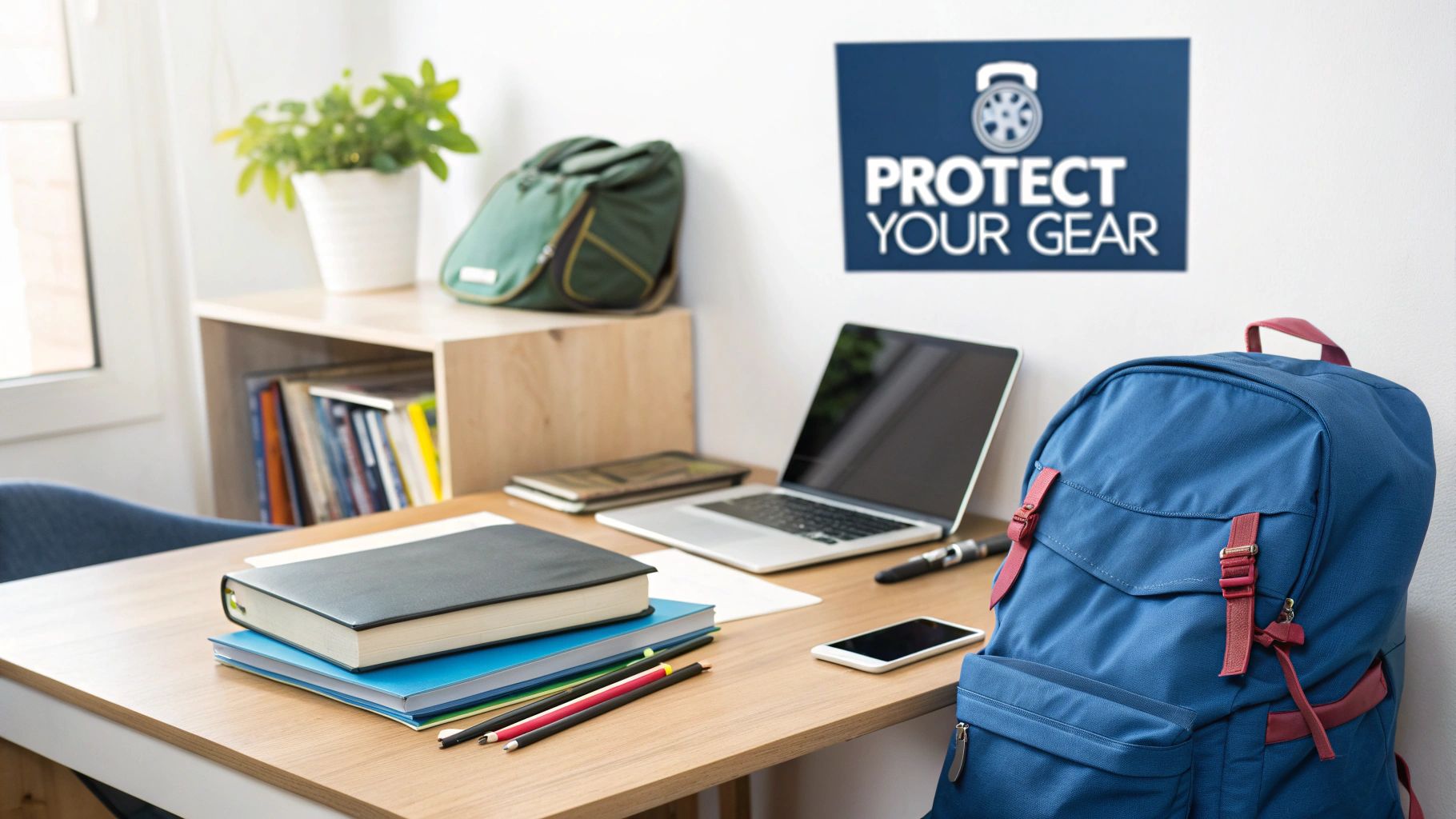
Starting university is an exciting new chapter but it brings a whole new set of responsibilities. One of the easiest to overlook is protecting your belongings. When you add up the value of your textbooks, gadgets, clothes and other personal items you would be surprised just how much it all comes to.
The hard truth is that student accommodation, especially shared houses, can be a magnet for theft. But it is not just about crime. Everyday mishaps like fire, flooding or even accidentally spilling a drink over your laptop could leave you with a massive bill to replace everything. Without insurance that financial headache is all yours.
The True Value of Your Belongings
It is easy to underestimate what your possessions are worth until you are faced with buying them all over again. A new laptop runs into hundreds of pounds, your phone is probably just as pricey and the costs of replacing clothes, books and other electronics stack up fast. Most students do not even realise how much they stand to lose until it is too late.
A 2019 study really put this into perspective. It found the typical contents of a UK student's room are worth a staggering £3,259 —that is a huge 49% jump in just two years. Tech alone, like laptops, phones and TVs, made up over £1,750 of that total.
Despite this, an alarming 27% of UK students had no insurance at all, leaving more than £2 billion worth of their gear completely unprotected. The gap between what students own and the protection they have is massive, putting a huge number of them in a really vulnerable spot. Insurance is designed to close that gap, offering a low-cost solution to a potentially high-cost problem.
Protecting Your Peace of Mind
At the end of the day, student home contents insurance is about more than just money. It is about peace of mind. It allows you to get on with your studies and enjoy university life without that nagging "what if?" worry in the back of your mind. A small annual premium can save you from major financial stress down the line.
Going uninsured can have consequences beyond the immediate cost. Imagine the stress of losing your laptop right in the middle of exam season. The emotional and academic fallout can be huge, something our guide on the hidden costs of delayed claims explores in more detail.
Think of insurance as a fundamental part of your university toolkit, right up there with your textbooks and student ID. It is a smart investment in your financial security and overall wellbeing from day one.
Understanding Your Policy Coverage
Think of your student contents insurance policy as the rulebook for your protection. It is not just a bit of paper to shove in a drawer; it is the agreement that spells out exactly what your insurer will cover when things go wrong. Getting to grips with this rulebook is the only way to avoid a nasty shock if you ever need to make a claim.
So, what exactly are ‘contents’? It is pretty much all your personal stuff, from the big-ticket items like your laptop and smartphone down to your textbooks, clothes and even that bike you use to get to lectures. A good rule of thumb is to imagine turning your room upside down – almost everything that falls out is considered your contents.
What Standard Policies Usually Cover
A standard policy is your basic financial safety net, designed to protect you from the most common risks students run into. It is there to make sure you are not left footing a massive bill to replace everything after a disaster.
Most student contents policies will cover you for:
- Theft: This protects your belongings if they are stolen from your insured address, which is typically your locked room in halls or a shared student house.
- Fire Damage: If a fire damages or completely destroys your belongings, your insurance is there to help cover the cost of replacing it.
- Flooding and Water Damage: This covers damage from things like a burst pipe or severe weather that causes flooding in your accommodation.
One thing to get straight, especially with theft, is that you have to prove it happened. Insurers will nearly always ask for a crime reference number from the police. More importantly, check the small print for a forced entry clause. Many policies will only pay out for burglary if there is clear evidence of a break-in. If you just forgot to lock your door and your laptop gets pinched you might find your claim is rejected.
The Real Cost of Being Dishonest
When you make a claim, the insurer is taking you at your word. But some people get tempted to stretch the truth and that is when it crosses the line into insurance fraud – a serious criminal offence with major consequences.
Insurance fraud is not a victimless crime. It costs the UK economy over £3 billion every year, adding an average of £50 to every honest person's annual insurance bill.
Telling your insurer that your stolen three-year-old TV was a brand-new, top-of-the-range model is fraud. So is making up a loss entirely or claiming for things you never even owned. These dishonest claims create a ripple effect that hurts everyone.
Insurers have to spend time and money investigating suspicious claims. Those costs, plus the fraudulent payouts themselves, get passed on to all customers in the form of higher premiums. The whole system relies on people being honest and when that trust is broken we all end up paying for it. That is why insurers are so strict about needing proper evidence.
Common Exclusions and Policy Limits
While your insurance is there to protect you, it is not a blank cheque. Every single policy has exclusions and limits you need to know about right from the start.
One of the most important ones to watch for is the single-item value limit . This is the maximum amount an insurer will pay for any one item, often set at around £1,500 . If you have a pricey MacBook, a decent camera or a valuable musical instrument worth more than that you absolutely must declare it separately to make sure it is fully covered.
Here is a quick look at what is usually covered as standard versus what often gets left out or costs extra.
Standard Coverage vs Common Exclusions in Student Policies
This table breaks down what you can typically expect from a basic student policy and where you might need to consider paying for an add-on.
| Typically Covered | Typically Excluded (or requires add-on) | Important Condition to Note |
|---|---|---|
| Theft of items from your locked room. | Possessions taken outside your accommodation (e.g., at the library). | A crime reference number and signs of forced entry are often required. |
| Fire and flood damage to your electronics and clothes. | Accidental damage (e.g., spilling coffee on your laptop). | Accidental damage cover is a common and highly recommended add-on. |
| Valuables up to the single-item limit (e.g., £1,500). | High-value items that exceed the single-item limit. | You must list expensive items separately on your policy. |
It is easy to skip the boring bits but properly reading your policy documents is essential. It is the only way to know for sure what you are covered for, which will help you make an honest and successful claim if the time ever comes.
The Real Cost of Going Uninsured
It is easy to write off student contents insurance as just another expense you can do without. But what is the actual financial hit if you skip it? The truth is, a single theft or accident could land you with a bill that is far bigger than you would ever imagine.
Picture this: your laptop gets nicked from your room or you accidentally knock a coffee over it during a late-night study session. A decent student laptop costs anywhere from £500 to over £1,000 to replace. Throw in a smartphone at around £600 and a tablet at £400 and you are suddenly facing a nearly £2,000 hole in your finances from one bad day. And that is before you even think about replacing textbooks, clothes or other essentials.
The Numbers Tell a Sobering Story
This is not just a hypothetical risk. There is a worrying lack of awareness among students about how vulnerable they really are, leaving a huge number exposed. This is not just a feeling; it is backed by hard data showing a widespread issue across UK universities.
Recent survey data paints a pretty alarming picture. According to a 2023 Confused.com survey, a massive 59% of UK university students have no contents insurance at all. What is more, over half ( 52% ) had no idea what it even was when they started their course. This knowledge gap is massive, especially when you consider that students typically own possessions worth over £3,000 .
To make matters worse, the Office for National Statistics (ONS) highlights that students account for 16.6% of all personal crime reports, making them a prime target for theft.
Weighing the Cost Against the Benefit
When you stack up those potential replacement costs against the price of a typical policy, the value of student contents insurance becomes crystal clear. A policy is often surprisingly affordable and its price is really only shaped by a few key things.
These factors will influence your premium:
- Your Postcode: Insurers use postcode data to figure out the risk of theft in your area. Living somewhere with higher crime rates might mean a slightly higher premium.
- The Value of Your Possessions: The more your belongings are worth in total, the more it will cost to insure. This is exactly why getting an accurate valuation of your items is so important.
- Your Accommodation Type: Living in secure university halls with key-card access is generally seen as lower risk than a shared house with lots of people coming and going.
- Your Chosen Excess: The excess is simply the amount you agree to pay towards any claim. If you opt for a higher excess you can lower your annual premium but it means you will contribute more if you do need to make a claim.
This infographic gives you a quick visual breakdown of what is usually covered versus what might not be.
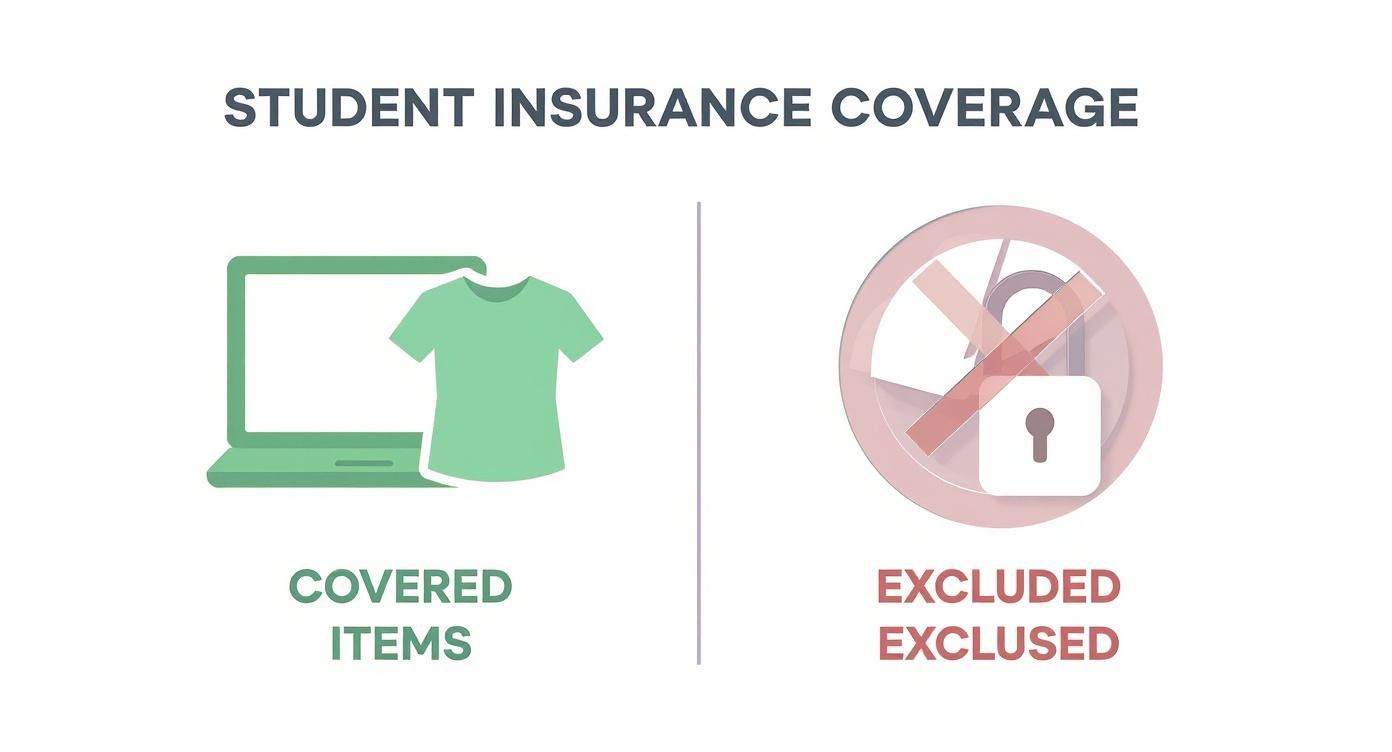
As you can see, standard policies protect your core items like laptops and clothes, while common risks like theft from unsecured areas might be excluded.
The Hidden Cost of Insurance Fraud
It might seem tempting to bump up a claim by adding a few things that were not really there or by exaggerating the value of a stolen gadget. But this is insurance fraud and it is a serious criminal offence with some pretty severe consequences.
Insurance fraud is not a victimless crime. It drives up the cost of premiums for everyone, making essential cover more expensive for all the honest students out there.
Insurers invest heavily in fraud detection. If you are caught you could end up with a criminal record, which can seriously jeopardise your future career prospects. Your policy will be cancelled immediately and you will find it incredibly difficult and expensive to get insurance ever again.
The short-term gain just is not worth the long-term risk. At the end of the day, student contents insurance is not a burden—it is a small, smart investment in your financial security and peace of mind.
Navigating the Claims Process with Integrity
If you ever need to make a claim on your student contents insurance you will want it to be as painless as possible. The good news is that making a claim should be pretty straightforward but it all hinges on one crucial thing from your side: being completely honest.
Knowing the right steps to take and understanding why integrity matters will do more than just help your claim succeed. It also protects you from some pretty serious consequences. At its core the entire insurance system is built on trust. When you report a loss your insurer is trusting that your version of events is the real deal.
A Step-by-Step Guide to Making a Legitimate Claim
When something like a theft or accidental damage happens it is easy to feel completely overwhelmed. But if you follow a clear process you will find everything is much more manageable and you will seriously improve your chances of a successful claim.
-
Prioritise Safety and Report the Incident: First things first: your safety. If you have been burgled, do not go into your room if you think there is any chance the intruder is still there. Once you know you are safe your next call should be to the police to report the crime. This is not just a box-ticking exercise; they will give you a crime reference number , which is a vital piece of evidence for your insurer.
-
Contact Your Insurer Promptly: Do not hang about before getting in touch with your insurance provider. Most policies have a clause that says you need to report a claim within a certain timeframe. The sooner you let them know the sooner they can get the ball rolling. Make sure you have your policy number handy and be ready to explain exactly what happened.
-
Gather Your Evidence: This is where a little bit of prep work really pays off. To process your claim your insurer is going to need proof that you actually owned the items you have lost. This could be anything from:
- Original receipts or invoices.
- Bank or credit card statements that show the purchase.
- Photos of the items, especially if you have any showing visible serial numbers.
- The original packaging or manuals that came with them.
The Critical Importance of Provability and Honesty
An insurer's job is to pay out on genuine claims but they also have a duty to check that they are genuine. This is why being able to prove your claim is so important. Without enough evidence they cannot be sure the loss actually happened or that the items really belonged to you.
A smart move is to prepare an essential moving inventory list before you ever need it. Keeping a digital folder with photos of your valuables and scans of your receipts can make a massive difference. And if a claim is ever disputed it is worth understanding why your insurance company might refuse a claim and what to do.
Understanding Insurance Fraud and Its Ripple Effect
It can be tempting to exaggerate a claim. Maybe your stolen laptop was a few years old but you decide to claim for the latest model. Or perhaps you add a couple of things to the list that were not actually taken. This is insurance fraud and it is a serious criminal offence.
Insurance fraud is not a victimless crime. It is estimated to cost the honest majority of UK policyholders around £50 extra on their annual insurance bills as insurers are forced to hike up premiums to cover fraudulent losses.
Fraudulent claims create a ripple effect that hurts everyone. Insurers have to spend more time and money investigating suspicious claims and guess who pays for that? These costs get passed straight on to all customers. So your honesty genuinely helps keep student contents insurance affordable for you and everyone else.
The consequences for anyone caught committing fraud are severe. Your policy will be cancelled immediately, you could face prosecution and a criminal record and you will find it incredibly difficult (and expensive) to get any kind of insurance in the future. A moment of dishonesty can have a lasting negative impact on your life.
Making a legitimate claim with integrity empowers you to get the support you paid for, all while contributing to a fairer system for everyone.
How to Choose the Right Insurance Policy

Picking the right student contents insurance can feel like a minefield. With so many options out there, how do you know you are getting the cover you actually need without paying for extras you will never use?
The trick is to break it down into a few simple steps. Let us walk through it.
First things first: you need to get a realistic idea of what your belongings are actually worth. It is easy to underestimate but that could leave you seriously out of pocket if you ever need to make a claim.
Tally Up Your Belongings Accurately
Take a proper inventory of everything you are bringing to uni. We are talking gadgets, clothes, furniture and the lot.
- Create a detailed list of your items, noting down roughly when you bought them and what they cost.
- For anything expensive (think items over £1,500 ) try to find the original receipts and jot down serial numbers. This makes proving ownership a breeze.
- Bundle smaller things together. Group your textbooks, kitchen gear or bedding into categories to get a simple total value.
This exercise gives you a clear figure for your ‘sum insured’ – the total amount your policy will cover. It also makes it easy to update your cover if you buy a new laptop or smartphone during the year.
Get Your Head Around the Jargon
Once you know what you need to cover you will need to understand a couple of key terms that can make a big difference to your policy.
- Excess: This is the amount you agree to pay towards any claim. A higher excess usually lowers your premium but you will have to cough up more cash if something goes wrong.
- New-for-Old Cover: This is exactly what it sounds like. If your laptop gets stolen the policy pays out enough for you to buy a brand-new equivalent. It is perfect for tech.
- Indemnity Cover: This type of cover pays out based on the item's current value, factoring in wear and tear. It is often cheaper but means you might not get enough to buy a direct replacement.
The good news? Student contents insurance in the UK is surprisingly affordable. Policies can start from as little as £20 a year, with most students paying under £100 depending on where they live and what they own.
According to Save the Student's 2025 data, around 4% of students have been burgled. It is a sobering statistic that highlights just how cost-effective insurance can be. Getting your cover sorted before you even move in means you are protected from day one.
And if you plan on putting things in storage over the holidays it is worth looking into understanding self-storage insurance costs as this might be a separate consideration.
A quick note on honesty: being truthful in your application and any claims you make helps keep costs down for everyone. Insurance fraud adds an average of £50 to every single UK policy each year.
Compare Quotes Like a Pro
Do not just grab the first quote you see. A little bit of shopping around can save you a decent amount of cash.
- Check at least three different comparison sites to get a feel for prices and spot any big differences in what is offered.
- Drill down into the policy documents. Look for hidden exclusions or surprisingly low single-item limits that could catch you out.
- Instead of a generic, pricey package, customise your policy with add-ons for specific things you care about, like your bike or guitar.
This way you get the right balance between cost and cover, building a policy that actually fits your life.
| Cover Type | How It Works | Best For |
|---|---|---|
| New-for-old | Replaces items with brand new equivalents | Recent tech and high-value possessions |
| Indemnity | Pays current market value based on age and condition | Older items where replacement cost is lower |
Customise Your Coverage
Most standard policies have their limits but you can usually add extra protection for the things that matter most.
- Scheduled Personal Possessions: If you have items worth more than the standard single-item limit you can list them separately to make sure they are fully covered.
- Accidental Damage: This add-on is a lifesaver. It protects your gadgets from those inevitable spills and drops.
- Personal Possessions Away From Home: Standard policies usually only cover your things inside your student room. This extends that cover for when you are out and about, protecting your phone at a lecture or your headphones on the bus.
Imagine your laptop gets nicked from the library. Without that ‘away from home’ add-on, your claim would likely be rejected. It is these little details that count.
Always read the small print, especially the bits about security. Your policy might be invalid if you do not have specific locks on your doors and windows. Failing to meet these conditions could mean a rejected claim, leaving you to foot the entire bill yourself.
By taking the time to value your belongings, understand the key terms and compare your options you can find a policy that gives you genuine peace of mind without breaking the bank.
Frequently Asked Questions About Student Insurance
Let us clear up some of the most common questions and grey areas around student home contents insurance. We will focus on what you can prove, why honesty matters and how it all affects the price everyone pays.
Will My Parents’ Home Insurance Cover Me?
Sometimes, yes—but do not just assume you are covered. A parent’s policy might offer a small amount of "contents away from home" cover but the limits are often surprisingly low. We are talking maybe £250 per item. You absolutely have to dig into the policy details, otherwise you could find yourself seriously underinsured.
- Many policies cap single-item payouts at a low level, which is bad news for your laptop or phone.
- Theft cover often requires clear signs of a forced entry. That is tricky in a shared house where a door might have been left unlocked.
- Accidental damage when you are out and about is almost never included.
What About the Insurance in University Halls?
Most university halls provide a basic "block" insurance policy but it is often just that—basic. The total sum insured can be as low as £2,000 , which might not even cover your tech. Crucially, these policies frequently leave out accidental damage and will not cover your belongings once you take them out of your room.
It is always a good idea to get hold of the policy documents and see what is actually included. You can then decide if you need to top it up with your own add-ons for proper peace of mind.
A sobering thought: even small, exaggerated claims can add £50 to every honest student's premium. Integrity really does matter.
What If I Buy Something New and Expensive?
Got a new laptop for your birthday? Great! But if it is worth more than your policy's single-item limit you need to tell your insurer right away. If you do not list high-value items properly you will only get a partial payout if you need to claim, leaving you to cover the rest.
Updating your policy is usually straightforward:
- Log in to your insurer's online portal or app.
- Find the section for your personal possessions or specified items.
- Add the new item's name, its value and the receipt details.
- Save the changes and check for a confirmation email.
What Kind of Evidence Do I Need to Make a Claim?
Solid evidence is the absolute key to a smooth and successful claim. If you are a victim of theft the first thing you should do is report it and get a police crime reference number. For everything else, get into the habit of storing receipts, bank statements and photos of your valuable items—especially pictures of their serial numbers. This kind of provability makes the whole process faster and massively reduces the chance of any disputes.
| Evidence Type | Why It's Important |
|---|---|
| Receipts & Invoices | Proves the original price and when you bought it. |
| Photos with Serials | Confirms you owned the item and its condition. |
| Police Report | Officially validates that a theft or vandalism occurred. |
How Do I Avoid Insurance Fraud?
It can be tempting to round up the value of a stolen item but exaggerating a claim is a criminal offence. It also directly drives up insurance costs for every other student. Insurers have sophisticated fraud detection systems in place to protect honest customers and catch out dishonest claims.
- Keep all your documents and valuations accurate.
- Report what happened truthfully and as soon as you can.
- Never inflate the value of your items. It is not fair to anyone.
Can I Claim for Accidental Damage?
Spilled coffee on your tablet? Dropped your phone? That is what accidental damage cover is for but only if you have chosen it as an add-on. To make a claim you will need to provide photos showing the damage, along with the original proof of purchase. Always check your policy wording—some only cover major functional damage, not cosmetic scuffs and scratches.
- Clear photos of a cracked screen, bent frame or water damage are essential.
- Proof of purchase confirms the item’s age and its original value.
- A detailed description helps the claims adjuster decide whether to repair or replace it.
How Does the Excess Affect My Payout?
Your excess is the amount you agree to pay towards any claim. Think of it as your contribution. Choosing a higher excess will usually make your premium cheaper but it means you will pay more out of your own pocket if you need to make a claim. If your laptop repair costs less than your excess, for example, there is no point in claiming at all.
It is a balancing act. You need to pick an excess that makes your insurance affordable but will not leave you with a painful bill if the worst happens.
When Should I Report a Claim?
As soon as you possibly can. Do not wait around. Most insurance policies have a clause that requires you to report any loss or damage within a set period, often just 14 days .
- Reporting quickly helps preserve evidence and makes your claim more provable.
- Leaving it too long can lead to lost details and could even get your claim rejected.
You can find more detailed answers in our free and comprehensive FAQ article on student home contents insurance right here at Proova.
Ready to simplify your claims process with provable evidence and reduce fraud risk? Proova uses authenticated item databases to speed up claims and keep premiums lower for everyone. Start your free trial now at https://www.proova.com


